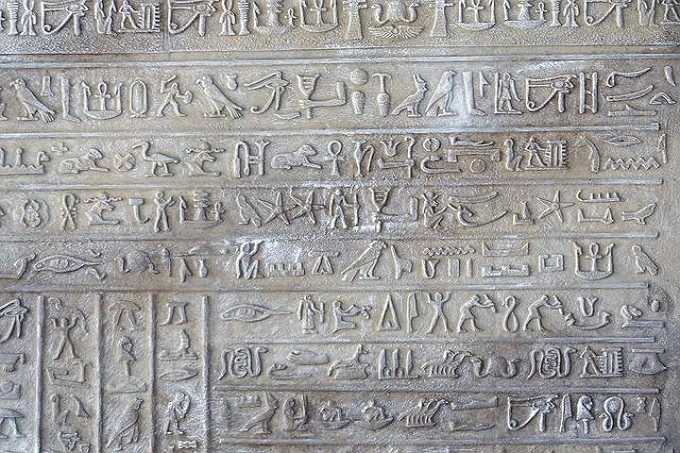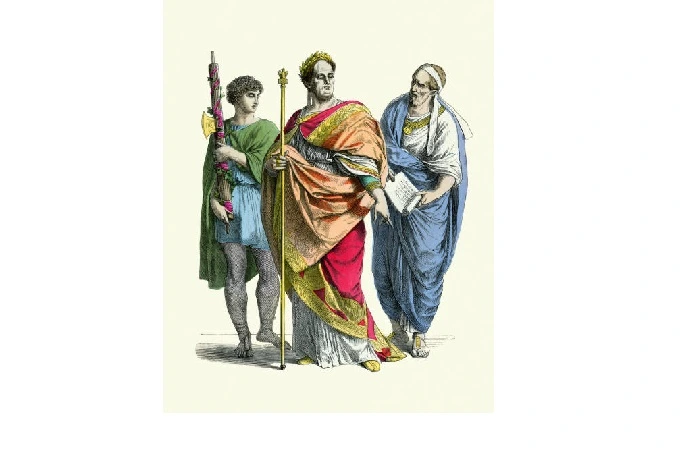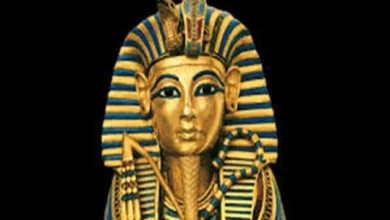Myths about the ancient world that many still believe for some reason

Searching for the truth has long been one of humankind’s primary goals, and as a result, people frequently arrive at quite different and sometimes wholly contradictory conclusions and results. However, as it is not always feasible to immediately get to the bottom of solid facts, official science must sometimes dispute its early conclusions. This is because it is not always possible to get to the bottom of reliable facts immediately. The truth about individual theses is frequently misplaced within the pages of scientific publications. It is perhaps the most striking aspect of the situation that does not make its way out into society.
1. Hieroglyphs were the daily script of the ancient Egyptians

When we think of the history of Ancient Egypt, the first things that come to mind are probably the pyramids, the pharaohs, and the hieroglyphs. These are some of the most powerful images from that time. The latter are typically represented in the public consciousness not only by enigmatic drawings that covered the walls of significant buildings but also by a technique that served people as writing, including everyday writing, because with their help, not only some sacred objects or divine pantheon were depicted, but also household items, animals, birds, and a great deal more. This is because the technique allowed people to depict not only some sacred objects or a divine pantheon but also household items, animals, and birds.
But the reality is that a portion of this viewpoint is incorrect. In the first place, the hieroglyphs are not completely decipherable. And secondly, there is evidence to suggest that the Egyptians did not always write their language using hieroglyphs. Therefore, according to the scholar Rosalie David, drawings that were so intricate and detailed, as well as so long in depiction, were only employed in exceptional circumstances, as the Egyptians believed that with their assistance, whatever was written would come to pass. In other words, the hieroglyphs were given some magical significance. But in day-to-day life, people employed other forms of writing, such as the so-called hieratic writing and, later, cursive demotic writing. Both of these writing systems were used.
2. The wardrobe of the ancient Greeks always included a toga

When one imagines individuals living in ancient times, they almost always do so dressed in the traditional garment known as a toga, which consisted of a piece of fabric that was wrapped around the individual’s body multiple times. The ancient Greeks are also credited with the development of this piece of clothing, in addition to the ancient Romans. And if it is assumed that it may be attributed to the former as being entirely credible, then it can be assumed that such strategies are incorrect to the latter.
It is sufficient to examine the background of the toga to arrive at this conclusion. And the Etruscans, who came up with it and gave it the name Tebenna, were the ones who first used it. After some time, the Romans adopted it as their own, giving it the name we know today, the toga. However, the people who lived in the ancient Greek policies wore cloaks known as “himation.” In addition, contrary to the widely held tradition of the modern depiction of the practice of wearing it, they were never worn over the naked body but were instead draped over undergarments. This is contrary to the contemporary depiction of the practice of wearing it that is common today.
3. Egyptian pyramids were always sandy

In keeping with the topic of ancient Egypt, it is worthwhile to recall another prevalent opinion unrelated to the actual events that occurred there. We are discussing the theory that the well-known pyramids of Egypt have always been portrayed in the same manner in which they are shown today, which is to say that they have been covered with a sandy yellow substance. However, in terms of actuality, this is only partially accurate; initially, the walls were snow white, but as time passed and other factors impacted, they began to take on a color similar to what it is today.
The varied types of stone used to construct the pyramids in their early decades resulted in various colors being used for the structures. Consequently, white limestone was used in the building process. Additionally, the stone’s polished surface reflected the sun’s rays so efficiently that there are accounts of contemporary people who claim that it was impossible to even look at the pyramids because of how effectively they reflected the sun’s rays. And it wasn’t until the passing of centuries that the smooth, original stone became cracked and covered in sand.
4. Gladiators had a lot of muscle
One other common fallacy concerning the portrayal of gladiators is connected, among other things, to the medium of film. So, for instance, in the film directed by Ridley Scott, the fighters in the arenas of the Colosseum are portrayed as tanned, muscular, attractive athletes who are frequently shown only partially clothed, and their protection appears to be more of a decoration. However, actual gladiators wore a whole different set of armour, and in addition, they possessed a good covering of subcutaneous fat.
According to research conducted by anthropologists, including experts from the Medical University of Vienna, who examined the remains of gladiator fighters, it was discovered that their diet consisted of relatively little animal protein but a significant amount of legumes and grains rich in carbohydrates. According to some reports that have been preserved from the time of the ancient historian Pliny, the gladiators were given the term Hordearii, which translates to “barley eaters.” This kind of diet led to the formation of fat rather than muscle, which insulated the body from harm and made it much more probable that a sword blow would not cause major damage to the internal organs.
5. In Greek myth, a box was opened by Pandora

Ancient Greek mythology is also replete with misinterpretations that have become entrenched in society. A vivid example of the result of an incorrect translation was the story of the curious Pandora, the first woman who opened the casket given to her by Zeus. But all the world’s troubles were stored there, and when she realized what she had done, she slammed the box, but it was too late: only hope remained at the bottom of it. The myth gave rise to the common expression “Pandora’s box” only in the real story, which the Greeks retold to each other; no box, casket, or casket appeared.
Considering the original myth, it becomes clear that Zeus gave Pandora a ceramic vessel called Pithos, which was used for olive oil. But the change in the essence of this container in the mind of the layman actually happened in the 16th century, moreover, by the forces of the famous Renaissance thinker Erasmus of Rotterdam: the thing is that when he translated Hesiod’s story about Pandora into Latin, he confused the term Pithos with another Greek word – pyxis (“box”). And it was because of this inaccuracy that the idiom “Pandora’s box” that became winged was born.
6. Gladiator fights have always been to the death
People also love inaccuracies in reproducing the era of gladiator fights in their imagination. So, they often imagine that during this action, to the screams and hooting of the audience, the soldiers fought to the last drop of blood, and one of them must have died – they say, only in this case, the fight stopped. However, in reality, it was not at all like that. In particular, this is proved by several studies by historians, who, on their basis, unequivocally state that gladiators did not die as regularly as is commonly thought.
The explanation is that gladiator fights were a form of gambling enterprise and even a market for investments in ancient times. Before the games began, quite a few individuals contracted gladiators for temporary use from their respective trainers. However, if a fighter were to pass away during a match, his sponsor would be responsible for paying multiple rental expenses. Additionally, training and preparing a gladiator is expensive for the owner of the gladiator. Because of this, the combatants were cared for and even treated after a bout in which they were victorious. In addition, out of ten battles, only one resulted in the death of one of the gladiators.
7. The diet of ancient people was a paleo diet

In recent years, many individuals who advocate for healthy living have attempted to demonstrate that adopting the diet our ancestors followed was essential in achieving and maintaining excellent health. We will discuss the Paleo diet, which has recently gained popularity. This diet is well-known for the fact that it consists mainly of foods that ancient hunter-gatherers and hunters would have been able to access, such as meat, fish, vegetables, fruits, herbs, and nuts. A diet like this would not permit consuming dairy products, grains, or legumes.
The modern Paleo diet has very little in common with the diet of ancient humans, such as those who lived during the Paleolithic era. As a result, historians and archaeologists believe that the cuisine in this instance included a significant amount of meat and fish; yet, prehistoric humans, particularly gatherers, had clear difficulties with these foods. And there weren’t that many plants around: tens of thousands of years ago, our ancestors frequently consumed roots, flowers, and herbs, all of which are things that contemporary man would find revolting to consume. It is simply impossible to reconstruct the ancient diet in its original form because the markers of the plant world themselves have changed since that time. This fact should also be taken into consideration.
Dinosaurs looked like reptiles

To a large extent, dinosaurs are portrayed in popular culture as being enormous, bipedal reptiles with scaly coatings, not unlike how modern crocodiles are depicted. Jurassic Park, the popular classic that was the brainchild of director Steven Spielberg, provides perhaps the most spectacular illustration of this type of extinct giant in a movie. In addition, during that period, an appearance such as this was not deemed to be something that did not conform to the vision held by the scientific community. On the other hand, the findings of contemporary paleontology contradict this image of dinosaurs; nonetheless, for some reason, the occupants do not consider this alteration.
And here’s the kicker: researchers have uncovered evidence that a significant proportion of the most well-known ancient species possessed feathers. In addition, the well-known Tyrannosaurus rex was one among them, which came as a surprise to many people. By the way, this should not surprise anyone because birds evolved from dinosaurs exactly this way. Therefore, gigantic lizards were large flightless birds with fangs and claws and behaved in a manner consistent with birds. In addition, many contemporary historians and scientists believe that the terrifying roar frequently associated with dinosaurs in popular culture was more similar to the cooing or squeaking of birds.




